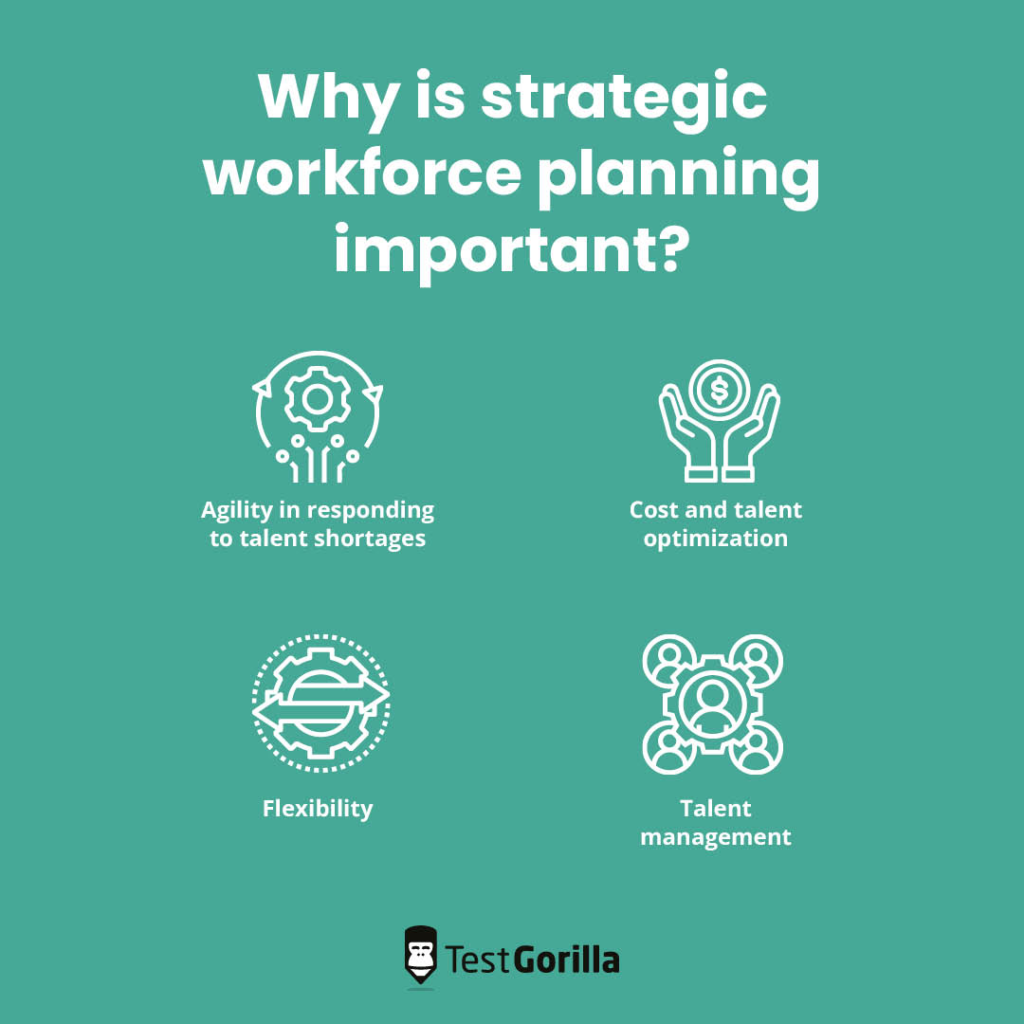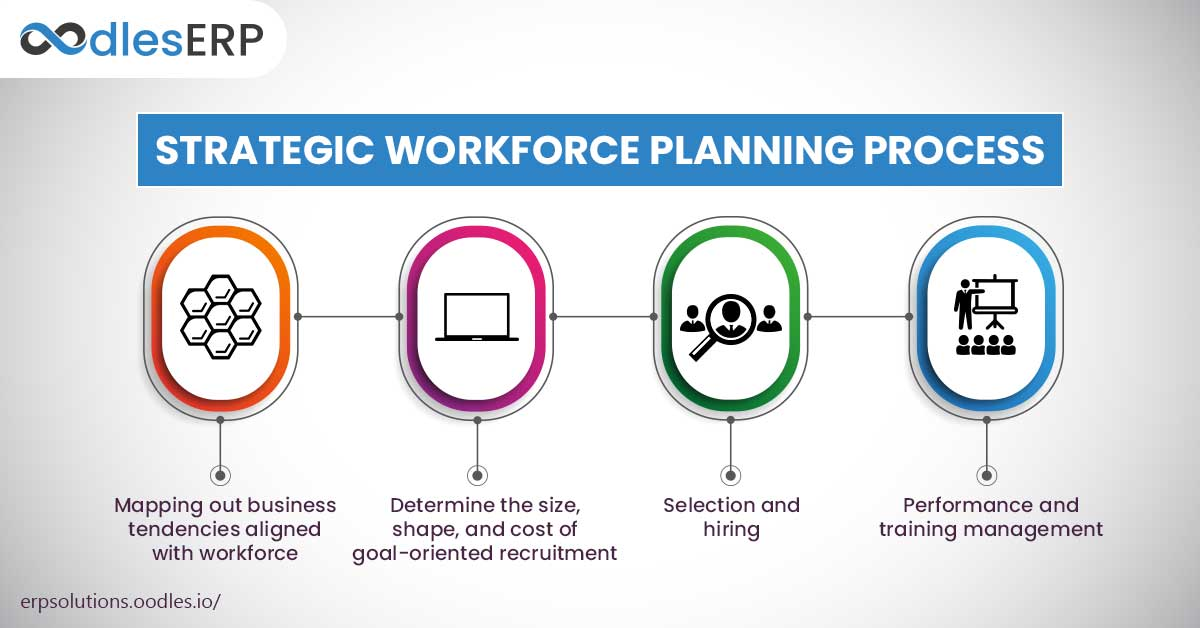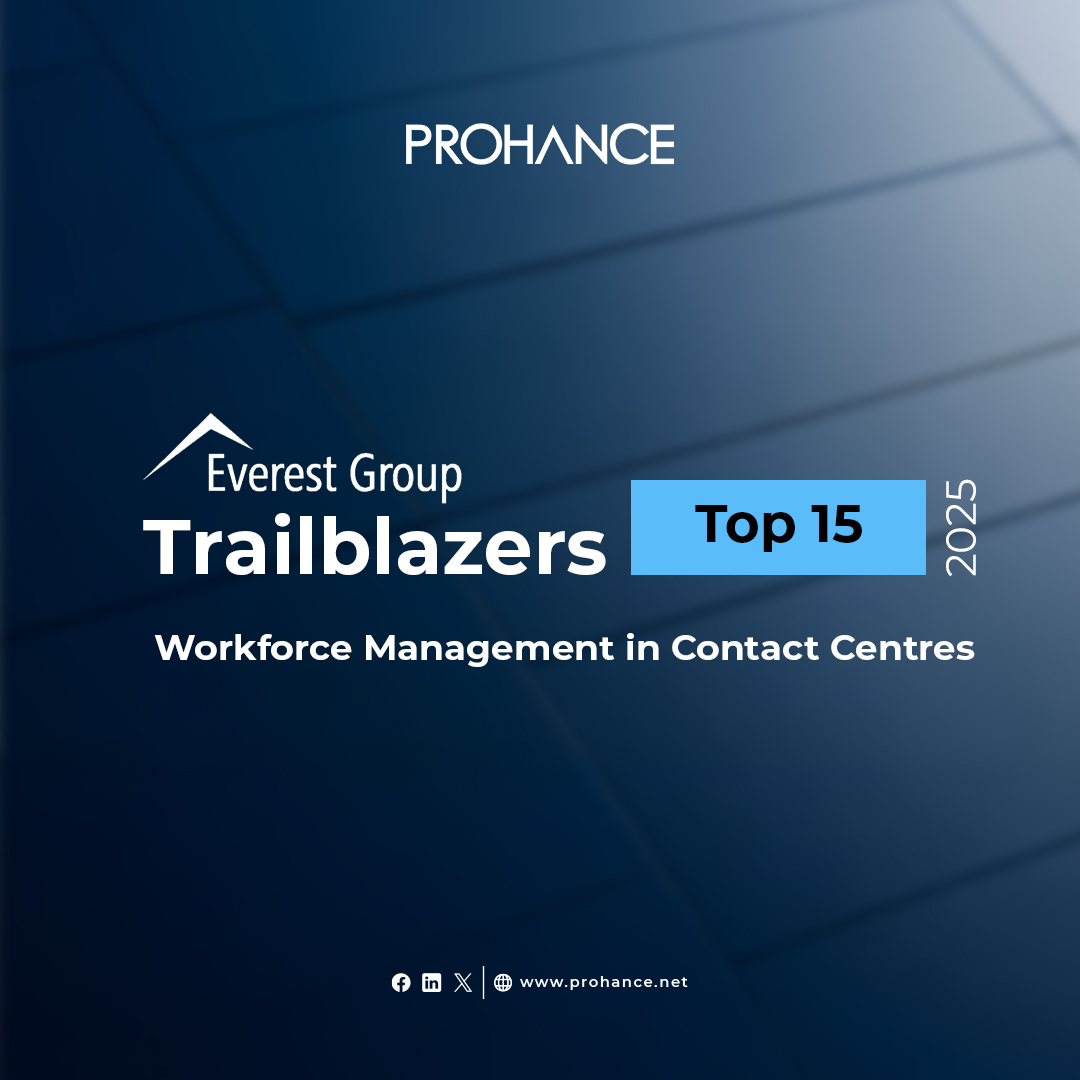Strategic Workforce Planning: The Complete Guide
Table of contents
- What is Strategic Workforce Planning?
- The Workforce Planning Process
- Key Aspects of Strategic Workforce Planning
- The High Cost of Employee Turnover
- Retention as a Workforce Planning Strategy
- Upskilling as a Driver of Engagement and Retention
- Benefits of Strategic Workforce Planning
- Strategic Workforce Planning Process & Real-World Examples
- Strategic Workforce Planning Process: From Planning to Action
- Strategic Workforce Planning Framework & Workforce Development Plan
- Best Practices in Strategic Workforce Planning
- Key Features to Look for in Strategic Workforce Planning Software
- Conclusion
- Frequently Asked Questions
The ever-shifting tides of the business world demand a dynamic approach to talent management. Strategic workforce planning (SWP) equips organizations with the foresight to navigate these uncertainties. It’s a continuous process designed to ensure your workforce possesses the capabilities needed to translate long-term goals into reality.
What is Strategic Workforce Planning?
Strategic Workforce Planning (SWP) is a forward-looking process that enables organizations to align their workforce with their long-term business objectives. It ensures the right people, with the right skills, in the right place—today, tomorrow, and years to come.
In contrast to more traditional staffing approaches that are designed solely to fill near-term gaps, SWP imposes a vision. It focuses on future workforce needs, identifies gaps, and develops plans to address them before they impact performance. That is, in responding to the question of what workforce planning is, the answer is to build a systematic, forward-looking process that aligns talent strategy with business success.
The Workforce Planning Process
The workforce planning process involves several structured steps that connect business objectives with workforce strategies:
- Define Organizational Goals
Start by identifying both operational and HR goals to ensure that the workforce strategy supports overall business objectives. - Collect External Data
Consider market trends, industry developments, and external factors that may influence talent needs. - Collect Internal Data
Review current workforce demographics, skills, and performance data to define present operational needs. - Forecast Workforce Needs
Identify the current workforce capacity and use forecasting techniques to predict future demand. - Identify Gaps
Compare existing skills with future requirements to uncover shortages or overlaps. - Develop Strategies
Build a workforce development plan that addresses gaps through targeted recruitment, retention initiatives, and upskilling programs.
Key Aspects of Strategic Workforce Planning
- Proactive Approach: Focuses on anticipating skill demands rather than only replacing vacant roles.
- Alignment with Business Strategy: Ensures that workforce decisions support organizational priorities.
- Future-Focused Forecasting: Uses analytics and modeling to predict future gaps before they occur.
- Data-Driven Decisions: Relies on HR systems, workforce analytics, and external insights to make informed choices.

Here’s a breakdown of the key aspects of SWP:
- Proactive Approach: It’s not just about filling open positions; it’s about anticipating future skill demands and developing strategies to address them.
- Alignment with Business Strategy: SWP is closely linked to the organization’s overall strategic objectives. The talent strategy is designed to support the execution of the business plan.
- Focus on the Future: SWP utilizes forecasting techniques to identify upcoming skill gaps and develop plans to close them before they hinder progress.
- Data-Driven Decisions: SWP relies on data from HR systems, workforce analytics tools, and industry trends to inform its strategies.
The Issue
The High Cost of Employee Turnover
High employee turnover places a financial and operational strain on organizations. Studies show that replacing an employee can cost nearly one-third of their annual salary. Beyond finances, turnover leads to the loss of knowledge, reduced productivity, and lower team morale.
This highlights why retention must be central to any workforce planning process.
Retention as a Workforce Planning Strategy
Retention is increasingly seen as a critical part of Strategic Workforce Planning. A survey by GoodFirms found that more than 70% of organizations consider retention one of their top challenges. Embedding retention measures into your workforce development plan helps organizations preserve expertise, reduce costs, and maintain stability.
Upskilling as a Driver of Engagement and Retention
Upskilling is a powerful retention strategy. When organizations invest in developing their employees, it sends a clear message of commitment to growth. This builds engagement, loyalty, and stronger performance.
Amazon’s initiative to upskill 100,000 employees is a well-known example of how strategic workforce planning software and structured development programs can help retain talent while preparing for future business demands.
Benefits of Strategic Workforce Planning
- Aligns Talent with Business Goals: Ensures workforce capabilities match strategic objectives, reducing skill mismatches. This alignment drives organizational success and supports long-term growth.
- Anticipates Future Needs: Helps in forecasting talent requirements, minimizing the risk of skill shortages or surpluses. This proactive approach allows for timely recruitment and training initiatives.
- Improves Recruitment and Retention: Enhances strategies for attracting and keeping the right talent. A well-planned workforce strategy also improves employee satisfaction and loyalty.
- Optimizes Resource Allocation: Identifies key investment areas for efficient use of budgets and resources. Effective allocation ensures that critical roles are filled without overspending.
- Supports Data-Driven Decision Making: Provides insights into workforce trends and performance for informed decisions. Data-driven strategies lead to more precise and effective management of human resources.
- Fosters Agility and Efficiency: Prepares the organization to adapt to changing market demands effectively. This adaptability helps maintain a competitive edge in a dynamic business environment.
Strategic Workforce Planning Process & Real-World Examples
- Talent Pipeline Development: Creating programs to nurture and develop talent for critical roles. This ensures a steady supply of qualified candidates ready to step into key positions.
- Succession Planning: Preparing for leadership continuity by identifying and training potential future leaders. This minimizes disruptions and maintains organizational stability during transitions.
- Workforce Analytics: Using data to forecast future staffing needs and adjust strategies accordingly. Analytics provide a clear picture of workforce trends and help optimize staffing levels.
- Specialized Training Programs: Implementing training to upskill employees for emerging technologies or roles. This keeps the workforce competitive and prepared for industry advancements.
- Seasonal Staffing Adjustments: Analyzing sales data to align staffing levels with peak seasons for optimal coverage. This approach ensures that staffing is efficiently managed throughout varying business cycles.
- Partnerships for Recruitment: Collaborating with educational institutions to recruit and train future staff in high-demand areas. These partnerships help create a talent pipeline tailored to the organization’s needs.
Strategic Workforce Planning Process: From Planning to Action
SWP isn’t just about filling empty seats. It’s a proactive strategy that yields a multitude of benefits:

Future-Proofing Your Talent Pipeline
By anticipating upcoming skill demands, you can develop targeted recruitment and development programs. This proactive approach reduces the risks pertaining to talent shortages, ensuring a steady stream of qualified individuals to fuel your organization’s growth.
Optimizing Performance
The right talent, strategically placed, is the cornerstone of high-performing teams. SWP helps bridge the gap between strategy and execution by identifying the skills needed to achieve each objective. With the right people in the right roles, your organization can unlock its full potential.
Cost Management Efficiency
SWP empowers you to make informed decisions about your workforce. By identifying areas where upskilling or reskilling current employees can address skill gaps, you can potentially reduce reliance on external hires, leading to significant cost savings.
Boosting Employee Engagement
A well-defined SWP fosters a culture of development within your organization. When employees see a clear path for growth and understand how their skills contribute to the bigger picture, they’re more likely to be engaged, motivated, and invested in the organization’s success.
Strategic Workforce Planning Tools
Technology plays an important role in streamlining your SWP efforts. Here are a few key tools to consider:
Human Resource Management Systems (HRIS)
HRIS data serves as a treasure trove of insights. By delving into this data, you can gain a comprehensive understanding of your current workforce’s demographics, skill sets, and performance metrics.
Workforce Analytics Tools
These advanced tools leverage historical data and industry trends to forecast future workforce needs. Think about having a crystal ball that unveils the specific skills your organization will require in the coming years – workforce analytics can provide just that level of foresight.
Scenario Planning Tools
The business landscape is rarely static. Scenario planning tools allow you to model the impact of different business scenarios on your workforce needs. This empowers you to develop adaptable strategies that can weather unforeseen circumstances.
Strategic Workforce Planning Framework & Workforce Development Plan

A robust SWP framework serves as the roadmap for your talent management journey. Here’s a breakdown of the fundamental steps involved:
Current State Assessment
Begin by taking stock of your current workforce. Analyze data on skills, demographics, and performance to gain a clear picture of your talent strengths and weaknesses.
Strategic Alignment
Ensure your SWP is inextricably linked to your organization’s overarching business strategy. Understand your strategic goals and how your workforce needs to evolve to support them.
Future-Focused Forecasting
Look beyond the horizon. Utilize workforce analytics and scenario planning tools to identify the skills and talent you’ll need to achieve your future goals.
Bridging the Gap
Once you’ve identified potential skill gaps, it’s time to develop strategies to close them. This might involve targeted recruitment initiatives, internal training programs, or partnerships with educational institutions.
Continuous Improvement
The business world is fluid, and your SWP needs to be as well. Regularly monitor progress, assess the effectiveness of your strategies, and adapt your plan as needed to stay ahead of the curve.
Best Practices in Strategic Workforce Planning
While the core framework provides a solid foundation, these best practices will further enhance your SWP’s effectiveness:
Stakeholder Alignment
Gain buy-in from key decision-makers across the organization, including HR, business unit heads, and senior management. A collaborative approach ensures everyone is working towards the same talent goals.
Data-Driven Decisions
Don’t rely on gut instinct; leverage the power of data. Utilize workforce analytics and other data sources to inform your strategic decisions and ensure they’re grounded in reality.
Embrace Agility
The ability to adapt is paramount. Build flexibility into your SWP to accommodate unforeseen changes in the business landscape or the talent market.
Communication is Key
Clearly communicate your SWP to all employees. When everyone understands the organization’s talent goals and their role in achieving them. It fosters a sense of ownership and engagement.
Key Features to Look for in Strategic Workforce Planning Software
When choosing a solution, it’s important to look for features that go beyond basic HR functions and support long-term business goals. Here are some of the essential capabilities to consider:
Workforce Forecasting and Planning
The ideal tool should enable you to forecast the workforce requirements in accordance with business objectives, the market situation, and the availability of talents. This enables organizations to project skill shortages and create a future-proofed workforce.
Talent Analytics and Reporting
Data analytics are needed for strategic workforce planning. Strong analytics-enabled software and customizable reporting enable HR leaders to monitor trends, analyze turnover, and assess workforce productivity.
Scenario Modeling
Business conditions shift rapidly, and scenario modeling allows organizations to try out “what-if” situations. Expansion, restructuring, or market fluctuations – scenario modeling ensures improved decision-making.
Skills and Competency Tracking
A contemporary workforce planning process must incorporate real-time tracking of employee skills and competencies. This allows HR teams to link learning programs and develop a focused workforce development plan.
Automated Scheduling and Resource Allocation
Strategic workforce planning software must streamline cumbersome scheduling requirements through automated resource allocation between teams, departments, or geographies, minimizing manual effort and the risk of noncompliance.
Integration with HR and Business Systems
To be most effective, the application must integrate with current HR systems, payroll, and performance management applications. Smooth integration provides one single source of truth for workforce information.
Retention and Succession Planning Tools
High turnover is expensive. The top platforms have retention dashboards and succession planning capabilities that allow organizations to spot at-risk employees and build future leaders.
Compliance and Risk Management
Adherence to labor laws and regulations is imperative. Workforce planning software must monitor adherence requirements, enabling organizations to minimize legal and financial exposures.
Ease of Use and Scalability
The software ought to be straightforward to implement across teams with little training required. It is also important that scalability allows it to accommodate the growth of the organization without constant replacement or upgrades.
Also Read: 15 useful metrics to follow for workforce planning
Conclusion
Strategic workforce planning is a powerful tool for securing your organization’s future.
By following the steps outlined above, implementing the recommended best practices, and leveraging the available tools like ProHance, you can develop a comprehensive strategic workforce planning that empowers your workforce to navigate the ever-changing tides of the business world and propel your organization.
Frequently Asked Questions
Q1. What does strategic workforce planning involve?
Strategic workforce planning involves aligning an organization’s workforce with its long-term business goals. This process includes analyzing current workforce capabilities, forecasting future talent needs, and identifying gaps between the present and future workforce. It also involves developing strategies to recruit, retain, and develop employees to meet these needs. Strategic workforce planning examples might include succession planning, talent pipeline development, and implementing specialized training programs to upskill employees. Overall, it helps organizations stay agile and competitive by ensuring they have the right talent in place at the right time.
Q2. What are the major objectives of strategic workforce planning?
The major objectives of strategic workforce planning include aligning the workforce with organizational goals, anticipating future staffing needs, and ensuring a balanced skill set within the company. It aims to optimize recruitment strategies, improve employee retention, and prepare for potential changes in the market or industry. Another key objective is to enhance operational efficiency by making informed decisions based on data-driven insights. The benefits of workforce planning are evident in improved productivity, reduced skill shortages, and a more resilient organization prepared to adapt to future challenges.
Q3. What tools can be used to support strategic workforce planning?
Several tools can empower your SWP efforts, including Human Resource Management Systems (HRIS), workforce analytics tools, and scenario planning tools.
Q4. How to measure strategic workforce planning?
Measuring strategic workforce planning involves tracking key metrics such as employee turnover rates, time-to-hire, and skill gap analysis. Other important indicators include the success of succession planning efforts, employee satisfaction and engagement levels, and the alignment of workforce capabilities with business goals. Additionally, analyzing the impact of workforce planning on productivity and cost savings can provide insights into its effectiveness. Reviewing strategic workforce planning examples from similar organizations can also help in benchmarking and refining measurement strategies, ensuring continuous improvement in workforce planning processes.
Q5. What is workforce planning, and how does it differ from strategic workforce planning?
Workforce planning refers to the act of ensuring an organization is adequately staffed with the right number of employees possessing the appropriate skills to address immediate business requirements. Strategic workforce planning, however, has a longer-term perspective. It synchronizes talent needs with business objectives, plans future talent gaps, and formulates foresight strategies for creating a future-proof workforce.
Q6. What are the benefits of strategic workforce planning and related software?
Software for strategic workforce planning allows organizations to plan future workforce requirements, lower turnover, and maximize labor expense. The main advantages include enhanced talent deployment, fact-based decision-making, enhanced succession planning, and enhanced alignment of workforce potential with business goals. It finally allows companies to remain responsive to shifting market conditions.
Q7. What is a workforce development plan, and how does it fit in the strategic planning process?
A workforce development plan is a formal plan to upskill, reskill, and activate employees to address current and future business demands. As part of the strategic workforce planning process, it has an essential function by filling skills gaps, improving retention, and having employees ready to support long-term organizational objectives.
Q8. What features should I look for in strategic workforce planning software?
The ideal strategic workforce planning software should have features such as workforce forecasting, tracking of skills and competencies, scenario modeling, scheduling automation, and retention capabilities. It should also provide strong analytics, easy integration with HR systems, compliance tracking, and scalability to expand with your organization. These features enable effective implementation of the workforce planning strategy.






